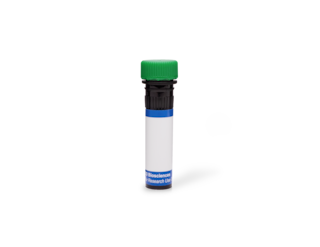-
Your selected location is
Middle East / Africa
- Change location/language
-
Reagents
- Flow Cytometry Reagents
-
Western Blotting and Molecular Reagents
- Immunoassay Reagents
-
Single-Cell Multiomics Reagents
- BD® OMICS-Guard Sample Preservation Buffer
- BD® AbSeq Assay
- BD® Single-Cell Multiplexing Kit
- BD Rhapsody™ ATAC-Seq Assays
- BD Rhapsody™ Whole Transcriptome Analysis (WTA) Amplification Kit
- BD Rhapsody™ TCR/BCR Next Multiomic Assays
- BD Rhapsody™ Targeted mRNA Kits
- BD Rhapsody™ Accessory Kits
- BD® OMICS-One Protein Panels
- BD OMICS-One™ WTA Next Assay
-
Functional Assays
-
Microscopy and Imaging Reagents
-
Cell Preparation and Separation Reagents
Old Browser
This page has been recently translated and is available in French now.
Looks like you're visiting us from {countryName}.
Would you like to stay on the current location site or be switched to your location?
BD Transduction Laboratories™ Purified Mouse Anti-CD220
Clone 46/CD220 (RUO)






Western blot analysis of CD220 on a mouse liver lysate. Lane 1: 1:250; lane 2: 1;500; lane 3: 1:1000 dilution of the anti- CD220 antibody.

Immunofluorescence staining of PFSK-1 cells (human neuroectodermal tumor line; ATCC CRL-2060).




Regulatory Status Legend
Any use of products other than the permitted use without the express written authorization of Becton, Dickinson and Company is strictly prohibited.
Preparation And Storage
Product Notices
- Since applications vary, each investigator should titrate the reagent to obtain optimal results.
- Please refer to www.bdbiosciences.com/us/s/resources for technical protocols.
- Caution: Sodium azide yields highly toxic hydrazoic acid under acidic conditions. Dilute azide compounds in running water before discarding to avoid accumulation of potentially explosive deposits in plumbing.
- Source of all serum proteins is from USDA inspected abattoirs located in the United States.
Companion Products


Insulin Receptor (IR) is a transmembrane receptor tyrosine kinase which, upon insulin binding, initiates a cascade of events, including autophosphorylation, phosphorylation of cellular protein substrates, glucose transport, and glycogen synthesis. IR is synthesized as a large glycosylated precursor that is cleaved upon maturation into a 130 kDa α-subunit with kinase activity and a 95 kDa β-subunit. The active Insulin Receptor is a heterotetramer of homologus α and β subunits joined by disulfide bonds. Among the major cytosolic substrates of the Insulin Receptor are IRS-1 and -2, β-Adrenergic receptor, and pp15 (adipocyte lipid-binding protein, ALBP). Autophosphorylation of the IR recruits IRS-1 and -2 to the phosphotyrosines. Subsequently, the phosphorylated IRS-1 and -2 act as docking sites for other signaling proteins like PI3-Kinase, Shc, PTP1D, Nck, etc. In addition, the phosphatase LAR is tightly associated with the IR and LAR becomes activated after insulin stimulation dephosphorylating the IR and its substrates. Therefore, LAR provides a turn-off mechanism in insulin signaling.
This antibody is routinely tested by western blot analysis. Other applications were tested at BD Biosciences Pharmingen during antibody development only or reported in the literature.
Development References (5)
-
Ebina Y, Ellis L, Jarnagin K, et al. The human insulin receptor cDNA: the structural basis for hormone-activated transmembrane signalling. Cell. 1985; 40(4):747-758. (Biology). View Reference
-
Frattali AL, Treadway JL, Pessin JE. Insulin/IGF-1 hybrid receptors: implications for the dominant-negative phenotype in syndromes of insulin resistance. J Cell Biochem. 1992; 48(1):43-50. (Biology). View Reference
-
Shumay E, Song X, Wang HY, Malbon CC. pp60Src mediates insulin-stimulated sequestration of the beta(2)-adrenergic receptor: insulin stimulates pp60Src phosphorylation and activation. Mol Biol Cell. 2002; 13(11):3943-3954. (Biology). View Reference
-
Yip CC, Jack E. Insulin receptors are bivalent as demonstrated by photoaffinity labeling. J Biol Chem. 1992; 267(19):13131-13134. (Biology). View Reference
-
Zundel W, Swiersz LM, Giaccia A. Caveolin 1-mediated regulation of receptor tyrosine kinase-associated phosphatidylinositol 3-kinase activity by ceramide. Mol Cell Biol. 2000; 20(5):1507-1514. (Biology). View Reference
Please refer to Support Documents for Quality Certificates
Global - Refer to manufacturer's instructions for use and related User Manuals and Technical data sheets before using this products as described
Comparisons, where applicable, are made against older BD Technology, manual methods or are general performance claims. Comparisons are not made against non-BD technologies, unless otherwise noted.
For Research Use Only. Not for use in diagnostic or therapeutic procedures.